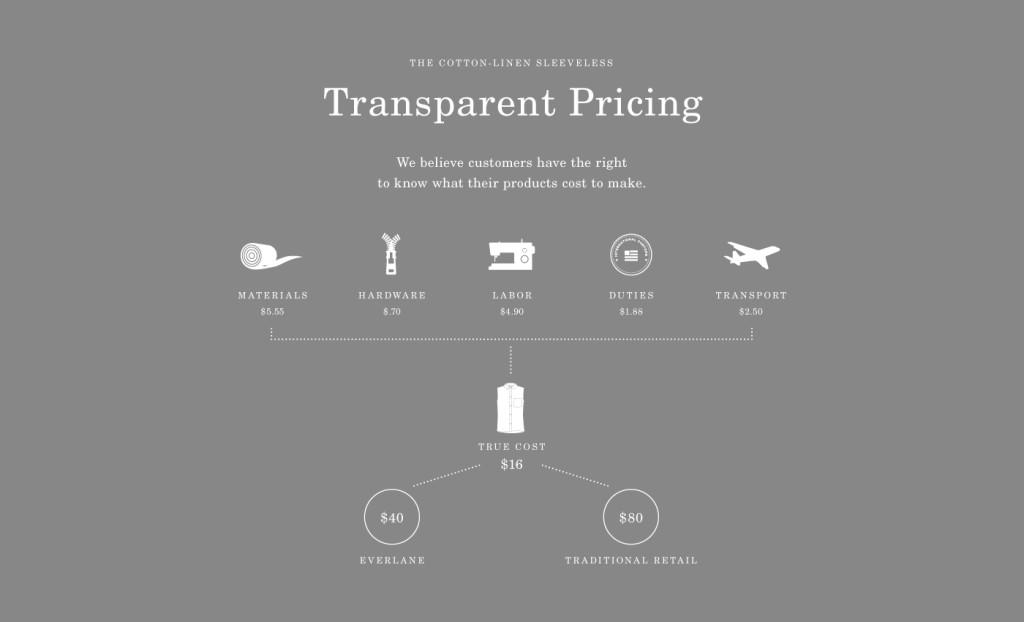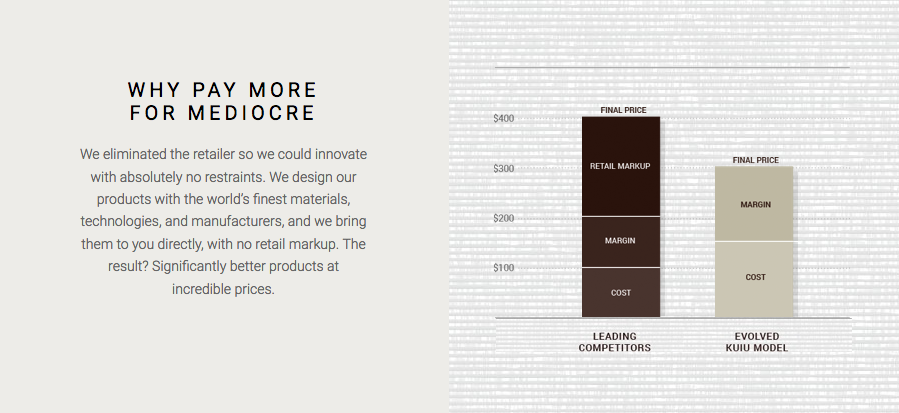Reinvesting in Our Products
We want our products to be more premium.
I said this to Patrick the first time we met over beers. A few months later, I saw that line again in the brief for Tortuga V3, which later became the Outbreaker backpack.
Our V2 line was good, but Jeremy and I have always wanted Tortuga to be great. With more Kickstarter copycats coming every month, we saw an opportunity to transcend our previous work and to move Tortuga to another level.
We were able to do this because we're a v-commerce company.
As originally defined by Bonobos founder Andy Dunn, v-commerce brands are digitally-native companies that make and sell their own products. You're probably familiar with v-commerce brands like Bonobos, Warby Parker, Everlane, or Casper. Think of an internet-first version of H&M or The Gap.
Like those companies, Tortuga is a v-commerce brand. We manufacture and sell our own gear directly-to-consumers via the internet.
The V-Commerce Pricing Model
Companies with this business model do not have to account for retailers or other middlemen in their pricing and costs. A traditional brand manufactures a product, adds their margin, then sells it to a retailer at the "wholesale price." The retailer then doubles (at least) that price to set the final "retail price" that consumers pay.
Here's an illustration of the market from Everlane:

Via Everlane and Post-Control Marketing
V-commerce companies avoid the retail markup by selling their products directly to customers rather than to a retailer. By removing the retailer's margin, v-commerce companies can invest more to make a better product and take a larger margin without raising the price that customers pay.
The customer gets a better product at a lower price, without hurting the company's bottom line or creating a "race to the bottom" price competition.
This dynamic allows us to make better products than Tumi at half of the price.
KIUI illustrates this dynamic here:

Via KUIU
Investing in V3
Like the KIUI model above, we have invested significantly more in the Outbreaker collection than in our previous products. The Outbreaker backpack and Outbreaker daypack each cost us twice as much to manufacture as their predecessors.
Thanks to the v-commerce model, we are able to invest more money in making better products without a commensurate price increase.
The materials are the most obvious upgrade. We've gone from standard ballistic nylon to waterproof sailcloth, a more technical and expensive material. The Outbreaker daypack's sailcloth is 10x the price of our previous daypack's nylon.
Along with materials and design, you'll notice smaller touches like printing and custom buckles. Patrick calls these "second look" or "third look" features. They aren't immediately obvious but are the small touches that add up to making the product feel more premium. Even if it doesn't happen consciously, customers notice the care and attention to detail that go into premium products.
What's Next
Aside from wanting to create a great product, the increased investment in V3 allows us to use our history and position in the market to put more distance between ourselves and all of the Kickstarter luggage.
We're using our investment in the Outbreaker collection to grow the moat around Tortuga and to make the business more defensible over time.
In my next post, I'll discuss what's it's like to be a bootstrapped v-commerce company and the difficulties of this business model.
Fred Perrotta Newsletter
Join the newsletter to receive the latest updates in your inbox.
